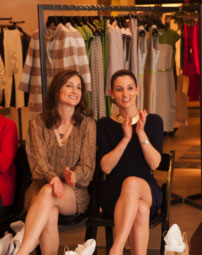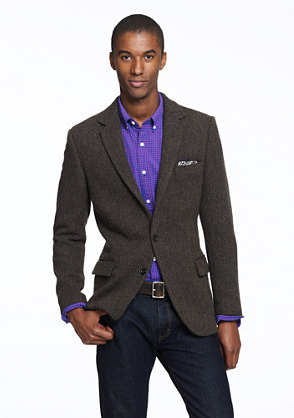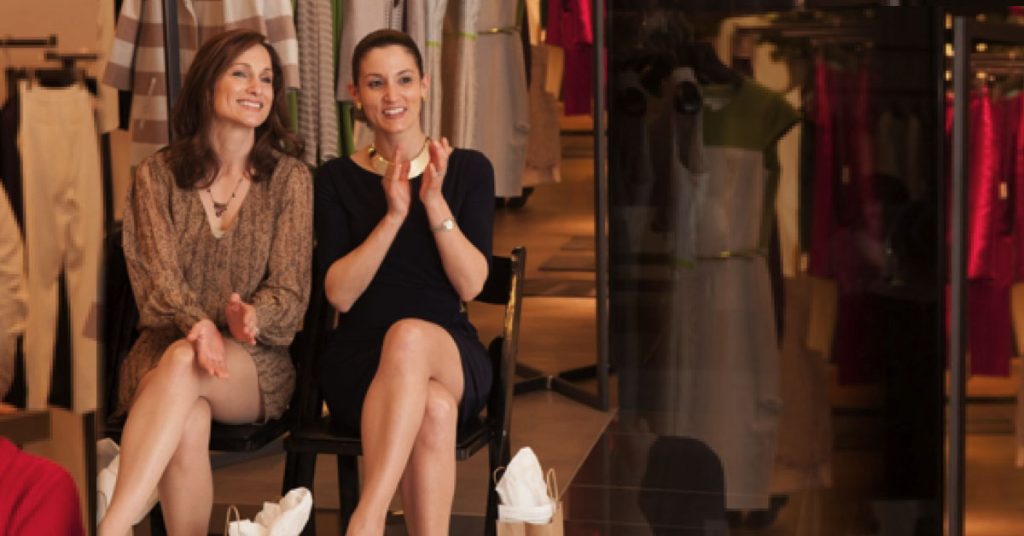Fashion Q&A: Wearing Winter Hosiery Well
Fashion Q & A: Wearing Winter Hosiery Well Q: I love your book and website! Here’s my latest question: I own an upscale business in a conservative area. I try to look professional but don’t have to be too stuffy! I always wear skirts, never pants. Since traditional hose are “out”, in winter I usually wear black tights. Now I find that some outfits just don’t seem to look good with the tights. I have one skirt that is a dark teal color. For some reason it looks frumpier than my other clothes with the tights. (I do make sure to keep pencil skirts at a perfect knee length—that helps against frumpiness!) What else can I wear? I always wear black shoes because I have a fitting problem and my shoe choices are limited. Help! A: Great question for our January post as many women struggle with this same issue. Here are some tips: My first question for you is what are you topping the teal skirt off with? If it is a blouse or other lighter weight top, I can see how the tights would feel frumpy. The name of the game when choosing hosiery for any outfit is to connect them to the weight, style and color of your overall outfit. Tights can feel frumpy if the top half of your outfit is lighter in weight and/or color. Adding a sweater can often balance the weight of the tights. Alternatively, sheer, off-black hosiery with the teal skirt will give you a slightly lighter (and less frumpy!) look if you are wearing a lighter weight sweater or something like a shirt with a cardigan or pull-over sweater with the skirt. If you layer the look with a sweater, a black one will help balance black hosiery. Boots and tights with a teal skirt and heavier black sweater is a stylish look too. Heels can also combat feeling too frumpy in skirts. A suede pump with tights often does the trick for me. I have a great pair of suede, wedge heel booties that are my current go-to shoe for “de-frumping” skirts and dresses this time of year. Teal is such a great color and does play nicely off black in the winter months. As you move into spring, nude hosiery (and a nude or navy pump if you can find them to fit and flatter your feet and legs) will transition this color nicely if the fabric is not too heavy. Finally, on the topic of “traditional hose”: like you, many women believe they are “out” of style but they really are not. Calvin Klein, Donna Karan and Hanes are a few good companies that have perfected the color of their nudes and they look great when you want a natural look and the polish that hosiery provides. Our stylists Carolyn Lieberman and Sarah Zengo (pictured at right) are both wearing nude hosiery at an early spring benefit we hosted. I think you will agree that they both look great! While I personally wear tights most often in cool weather, I wear traditional hosiery year-round. In the summer, I sometimes need the formality that hosiery provides (speaking at conferences, etc.). Smoky gray and navy hosiery are both current winter favorites of mine. I have a brown and navy dress that is slightly shorter than I normally wear. Navy sheer hosiery and navy pumps look much nicer than nude hosiery with this outfit this time of year. The navy offers more coverage and connects both the hem of the dress and the shoes with my legs better. Last word: Experiment with all sorts of hosiery colors and textures by using the formula outlined above. Hosiery really can up your style quotient when incorporated effectively. Don’t dismiss it too quickly!
Fashion Q&A: Wearing Winter Hosiery Well Read More »



